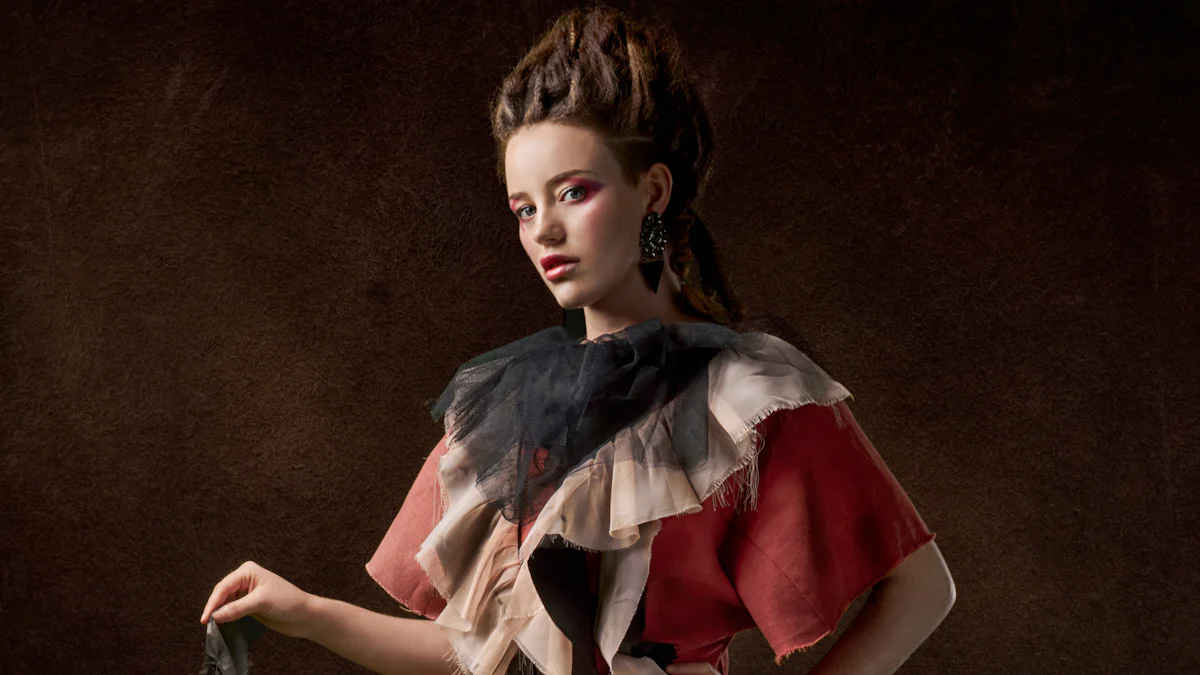
In Kate Chopin‘s ‘A Pair of Silk Stockings,’ the themes of social class and belonging take center stage. The story revolves around Mrs. Sommers, a character grappling with societal expectations and personal desires. Understanding these themes is crucial to unraveling the complexities of her choices and their implications. Through Mrs. Sommers’s journey, Chopin delves into the intricate dynamics of class distinctions and the innate human longing for acceptance and fulfillment.
Mrs. Sommers’s Struggles

Mrs. Sommers finds herself entangled in a web of financial hardships that dictate her choices and actions. Her meager income barely covers the essentials, leaving little room for luxuries or personal indulgences. The weight of financial strain presses heavily upon her shoulders, shaping her daily existence into a cycle of deprivation and necessity.
In the realm of family responsibilities, Mrs. Sommers assumes the role of a devoted caretaker to her children, embodying the essence of selflessness and sacrifice. Her days are consumed by tending to their needs, often at the expense of her own well-being and desires. The sacrifices she makes resonate with the struggles faced by many women torn between familial duties and personal aspirations.
These challenges faced by Mrs. Sommers mirror broader themes prevalent in society concerning social class and belonging. The juxtaposition of her financial struggles against societal expectations highlights the intricate interplay between individual circumstances and external pressures. Through Mrs. Sommers’s narrative, Chopin sheds light on the complexities inherent in navigating one’s identity within rigid social structures.
As Kate Chopin aptly portrays through Mrs. Sommers’ character, the delicate balance between financial stability and personal fulfillment is a tightrope many individuals walk daily.
Symbolism of Silk Stockings

Mrs. Sommers Related Themes
The pair of silk stockings in Kate Chopin’s narrative serves as a poignant symbol, encapsulating Mrs. Sommers’s repressed desires and aspirations. These delicate garments transcend their material existence to represent a deeper yearning for beauty, femininity, and self-expression. Just as the silk stockings envelop the legs in luxury, they also cloak Mrs. Sommers in a veil of newfound confidence and liberation.
The significance of the silk stockings in the story
The allure of the silk stockings lies not merely in their physical attributes but in the symbolic resonance they hold for Mrs. Sommers. As she encounters these luxurious items, a dormant part of her awakens—a desire for elegance and refinement that had long been suppressed by her daily struggles. The stockings become more than mere accessories; they embody a gateway to a world where her individuality can flourish.
How they symbolize Mrs. Sommers’s desires and aspirations
Through the lens of symbolism, the silk stockings mirror Mrs. Sommers’s innermost longings and unfulfilled dreams. They represent more than just an indulgence; they signify her quest for autonomy and self-worth beyond societal constraints. With each delicate thread, Mrs. Sommers stitches together fragments of her identity that had been frayed by hardship, weaving a tapestry of resilience and self-discovery.
A Pair of Silk Stockings Theme
Exploring the overarching theme through the purchase of these luxurious items unveils a profound metamorphosis within Mrs. Sommers’s character. The acquisition of the silk stockings marks a pivotal moment—a departure from self-denial towards self-assertion.
Exploration of the theme through the purchase of the stockings
The act of purchasing the silk stockings transcends mere consumption; it symbolizes a reclaiming of agency and personal sovereignty for Mrs. Sommers. In choosing to adorn herself with these opulent garments, she takes a decisive step towards embracing her intrinsic worth and desires.
The temporary escape they provide for Mrs. Sommers
As Mrs. Sommers slips on the silk stockings, she is transported into a realm where constraints dissolve, and possibilities unfurl before her like delicate threads weaving an intricate tapestry of liberation. The ephemeral escape granted by these silk veils offers her a glimpse into an alternate reality—one where she is not defined solely by duty but by her own essence.
Social Class and Belonging
Social Expectations
In the realm of social class, rigid expectations weigh heavily on individuals like Mrs. Sommers, dictating their choices and defining their worth within society. Kate Chopin, an expert in literature, keenly observed the disparities between the privileged and the marginalized during her time. This societal divide is reflected in the story through Mrs. Sommers’ struggles to conform to the prescribed roles of a working-class woman.
Expectations placed on working-class women like Mrs. Sommers
Working-class women, such as Mrs. Sommers, face a dual burden of financial constraints and societal norms that demand unwavering devotion to family above personal desires. The pressure to prioritize familial responsibilities over self-fulfillment creates a suffocating environment where individual aspirations are often sacrificed at the altar of social expectations.
The societal pressure to prioritize family over self
The overarching theme of social class and belonging underscores the pervasive influence of societal constructs on individual agency. Mrs. Sommers embodies this conflict as she grapples with her identity within a stratified society that values conformity over autonomy. The narrative delves into the complexities of navigating one’s place in a world where social hierarchies dictate one’s sense of belonging.
Sense of Belonging
Amidst the confines of her impoverished reality, Mrs. Sommers experiences fleeting moments of belonging when she indulges in luxuries beyond her usual means. These ephemeral escapes offer her a glimpse into a world where she is not defined solely by her circumstances but by her intrinsic worth and desires.
Mrs. Sommers’s fleeting sense of belonging when she indulges herself
As Mrs. Sommers surrenders to the allure of the silk stockings, she transcends her mundane existence and steps into a realm where possibilities abound, free from societal constraints that typically confine her spirit.
The contrast between her usual life and the brief moments of luxury
The stark contrast between Mrs. Sommers’ everyday struggles and these rare moments of luxury highlights the dichotomy inherent in her existence—a delicate balance between duty-bound obligations and suppressed yearnings for self-expression.
A Pair of Silk Stockings Theme
The theme interwoven throughout ‘A Pair of Silk Stockings’ delves deep into the intricate relationship between social class and belonging, unraveling how these forces shape individual destinies within a rigid societal framework.
How the theme of social class and belonging is central to the story
At its core, this theme exposes the underlying tensions between personal autonomy and external expectations, emphasizing how one’s social standing can either confine or liberate one’s sense of self-worth.
The broader implications of Mrs. Sommers’s actions
Through Mrs. Sommers’ transformative journey, Chopin underscores the profound impact that defying conventional norms can have on one’s perception of belonging and fulfillment within a stratified society.
In reflecting on ‘A Pair of Silk Stockings,’ the exploration of social class and belonging unveils profound insights. The story intricately weaves these themes, emphasizing their pivotal role in shaping Mrs. Sommers’ narrative. Understanding the nuances of social hierarchy and the yearning for acceptance enriches our comprehension of her choices. Moreover, delving into the impact of societal expectations on individual autonomy sheds light on the complexities inherent in navigating identity within rigid structures.
Through a critical lens, one can discern how discrimination based on race intertwines with social and economic class dynamics, complicating relationships in the narrative. Kate Chopin’s critique extends beyond mere societal norms to challenge perceptions of race and class, inviting readers to contemplate the intricate tapestry woven by these intersecting forces.

